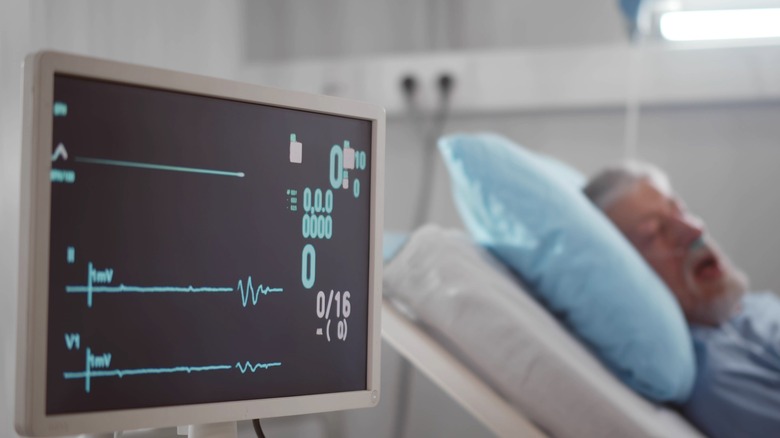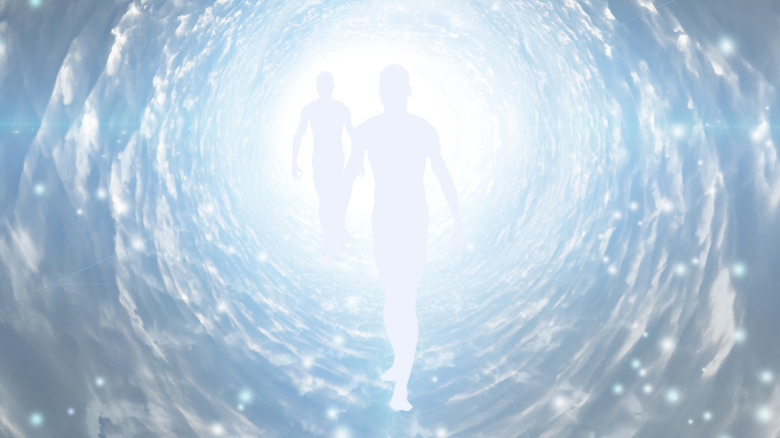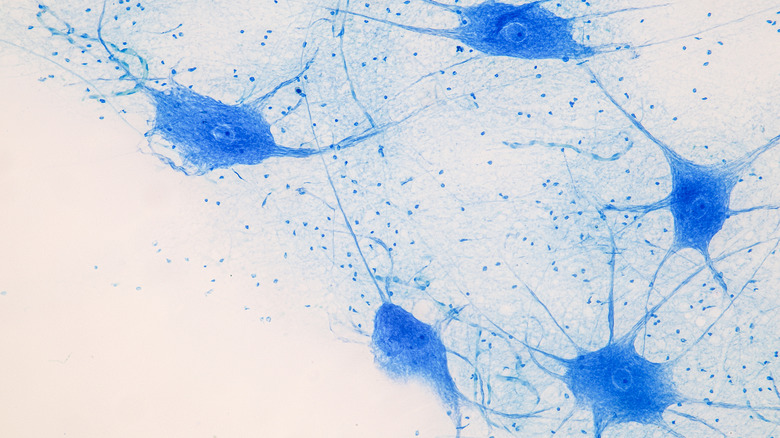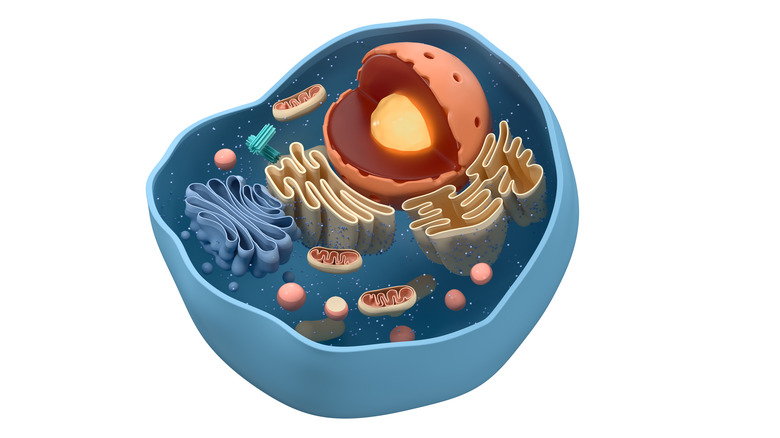This Is What Happens To Your Body 5 Minutes After You Die
Explaining what happens after death is complicated due to the surprisingly vague definition of death. There are several ways in which your body can go through the death process — depending on how you lost your life in the first place.
Under normal circumstances, if you die because your heart has given up, brain stem death will shortly follow, as your brain is gradually starved of oxygen. The sudden lack of blood supply causes the organ to swell and destroys the most critical part of the brain, the brain stem. This results in a total loss of consciousness, as our brains become unable to send signals to the rest of our bodies. At the same time, part of the brain is forced through the base of your skull by the resulting pressure in an unpleasant process known as "coning."
Technically speaking, there is more than one way of being "dead." You are dead when your heart stops beating, but you are even deader when your brain has officially "died." Brain death is still poorly understood by science and is currently subject to rigorous investigation. Ultimately, clinical death is a tricky subject — a grey area that's typically decided by the doctor present at the side of the deceased rather than an official checklist. In some rare cases, when a person's brain stem has failed but their heart hasn't, a person's body can even remain functional after death using a ventilator.
Heaven or DMT high?
Those who have died and been revived sometimes report that in the first few minutes after death, things get pretty weird. Around 10-20 percent of people have some kind of near-death experience, experiencing visions sometimes so profound they seem to create a major existential crisis, Popular Science reports. Common NDEs include floating out of the body, seeing bright lights, and experiencing feelings of otherworldly peace.
But is this simply the result of a slow shutdown of the body's most complicated organ? Some critics argue that when an NDE occurs, the brain may not actually have died yet, while others assert that in such cases consciousness has technically stopped. During this eerie twilight between life and death, some scientists believe our brains may be flooded with the immensely powerful chemical DMT. DMT is an extremely potent psychedelic that many people take recreationally, but it also exists in the brains of mammals. The striking similarities between voluntary DMT trips and near-death experiences may indicate that comforting images of heaven are the result of a bizarre psychedelic illusion.
Ghostly stirrings
For unprepared bystanders, the first few minutes after death can be pretty alarming because a fresh corpse may sometimes display ghostly signs of life. Before rigor mortis sets in (causing the body to become as stiff as a board), the body's muscles can move or twitch as though the patient had returned to consciousness.
According to one study by the American Academy Of Neurology, 39 percent of monitored corpses displayed similar signs of creepy twitching, moving their hands and toes after receiving latent signals from the spinal cord. The most extreme version of this type of movement is the so-called "Lazarus sign," when a corpse reflexively raises its arms like a vision from a vampirish nightmare. The relaxation of the muscles can also have the rather undignified side-effect of triggering a forced release of the bowels and bladder.
In rare cases, if a person has been doing some form of repetitive movement shortly before they die, they may also go through "cadaveric spasms," which can freeze a person's body into position in an accelerated form of rigor mortis. On such occasions, the body will replay a person's final actions on earth in a ghostly pantomime that can help morticians identify what the patient was doing when they died.
Cannibal corpse
Roughly four minutes after you've expired, your body starts to cannibalize itself during the first stage of decomposition, a process called autolysis (via Aftermath).
When you're alive, your body's respiratory system keeps your cells happy by feeding them oxygen and taking away carbon dioxide. However, as soon as you stop breathing, your cells become starved of oxygen, and they struggle to cope with the trapped CO2. The carbon dioxide inevitably makes the cells more acidic, destroying them from the inside out. Inevitably, your cells begin to rupture and fall apart, helping your body to rot away over the next few hours.
The total destruction of the cells' membranes releases hungry enzymes from the lysosome sacs in your cells — allowing them to run wild. Unrestrained at last, the enzymes munch on everything in the cells, and the body starts digesting itself — long before bacteria and insects have arrived to join in the process.



